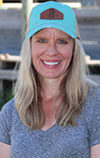"It depends on where you start," says David Lalman, an extension beef cattle specialist at Oklahoma State University. He states the environment the cattle live in affects their milk production. "Selecting for milk must match the vision you have for your herd," adds Carl Dahlen, a beef cattle specialist at North Dakota State University. "The breeding selections we make today reach far into the future."
When analyzing milk EPDs on prospective bulls, it may be years before the genetic potential for increased milk yield is realized within your herd. "It's important to ask, 'Where does our herd need to go?'" Dahlen says. The bull's genetics must be viewed in addition to the genetics of the cows you currently have and wish to breed.
It depends on the environment
The biggest factor to consider in relation to milk production genetics is the environment. "Nutrient supply and other environmental factors, like heat stress and parasites, essentially create a ceiling for milk yield. The more limiting the environment is, the lower milk production will be regardless of their genetic potential," Lalman says.
Lalman cites one recent experiment where cows from the same herd were provided a wide range of nutrient intake during lactation. Cows produced 16 pounds of milk to over 26 pounds of milk per day depending on the amount of nutrients they were provided.
Another important concept is that both appetite and maintenance requirements are linked to genetic potential for milk. The greater the genetic potential, the greater the appetite and the greater the annual maintenance energy requirement. Think of the non-lactating, non-pregnant Holstein cow for example. Given free-choice access to abundant, high-quality feed, they will consume more feed per unit of bodyweight and have maintenance requirements that are about 20 percent greater than beef cows. "This is why cattle with extremely high production potential do not fare well in the desert. On the other hand, cows with extremely high milk production potential may excel on a ranch where nutrient supply is essentially unlimited year-round."
"The consideration must be specific from one producer to the next," Dahlen says. "Ideally, the cows’ environment should match their genetics." According to a study at New Mexico State University, a higher milking cow may require up to 787 pounds of extra feed per year. In OSU studies, it takes roughly 30 to 50 pounds of high-quality feed (to the cow) to get 1 pound of extra calf weight. Producers must decide whether the cost is worth the end result.
Do your homework
Dahlen encourages producers to think about milk selection prior to bull sales in light of their current herd requirements. Lalman adds, "Milk is important to consider when holding back heifers from the bull you select." Even with terminal sires, it may be a small factor. "It would stand to reason, that if you are breeding for a higher producing animal, that the animal will require a higher intake."
Calves become active grazers and functional ruminants at roughly 100 days of age. Thus, feed must be available to the calves as well as the cows. If the cow's genetics support a higher milk yield, but adequate feed isn't available, milk isn't all that's affected. "Lower feed quality or quantity will come at the expense of body condition," Dahlen says. Body condition affects the long-term health of the animal, as well as the long-term health of the herd. It's likely that if body condition is lower, reproduction will be affected. As for the calves, once they consume forage,"80 to 85 percent of their weight gain will be due to foraging ability," Lalman says.
Optimal milk production is neither too high nor too low for the producer's environment and management model. "My suggestion," Lalman says, "is to implement (or continue) a mating system and selection program that targets moderate milk production. Moderate can be difficult to define since cattle producers don't milk their cows." He suggested using the Angus Association's Optical Milk Module to help quantify appropriate sire EPDs. Lalman says he always selects "extreme" for variable feed resources.
Dahlen says that it is hard to make generalizations and milk analysis must be producer specific. "Various factors need to be considered," he says. Once a producer has assessed their current genetics, their feed resources and their production costs, then it's up to them to decide whether bigger is truly better. ![]()
Marci Whitehurst is a freelance writer based in Montana.
PHOTO: Increasing milk production to wean a heavier calf should depend on the producer's goals and environment. Photo by Marci Whitehurst.









